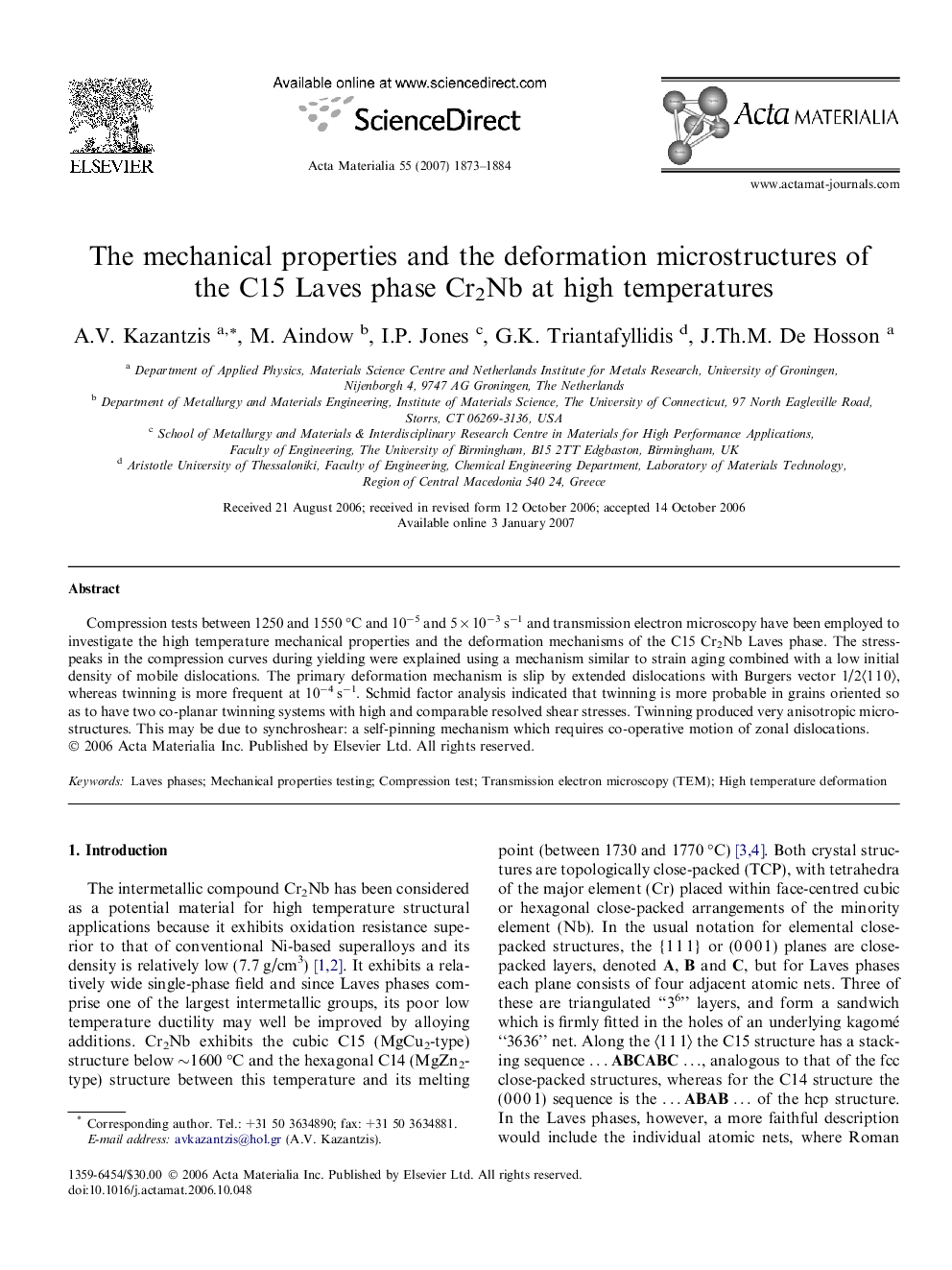| Article ID | Journal | Published Year | Pages | File Type |
|---|---|---|---|---|
| 1449930 | Acta Materialia | 2007 | 12 Pages |
Compression tests between 1250 and 1550 °C and 10−5 and 5 × 10−3 s−1 and transmission electron microscopy have been employed to investigate the high temperature mechanical properties and the deformation mechanisms of the C15 Cr2Nb Laves phase. The stress-peaks in the compression curves during yielding were explained using a mechanism similar to strain aging combined with a low initial density of mobile dislocations. The primary deformation mechanism is slip by extended dislocations with Burgers vector 1/2〈1 1 0〉, whereas twinning is more frequent at 10−4 s−1. Schmid factor analysis indicated that twinning is more probable in grains oriented so as to have two co-planar twinning systems with high and comparable resolved shear stresses. Twinning produced very anisotropic microstructures. This may be due to synchroshear: a self-pinning mechanism which requires co-operative motion of zonal dislocations.
